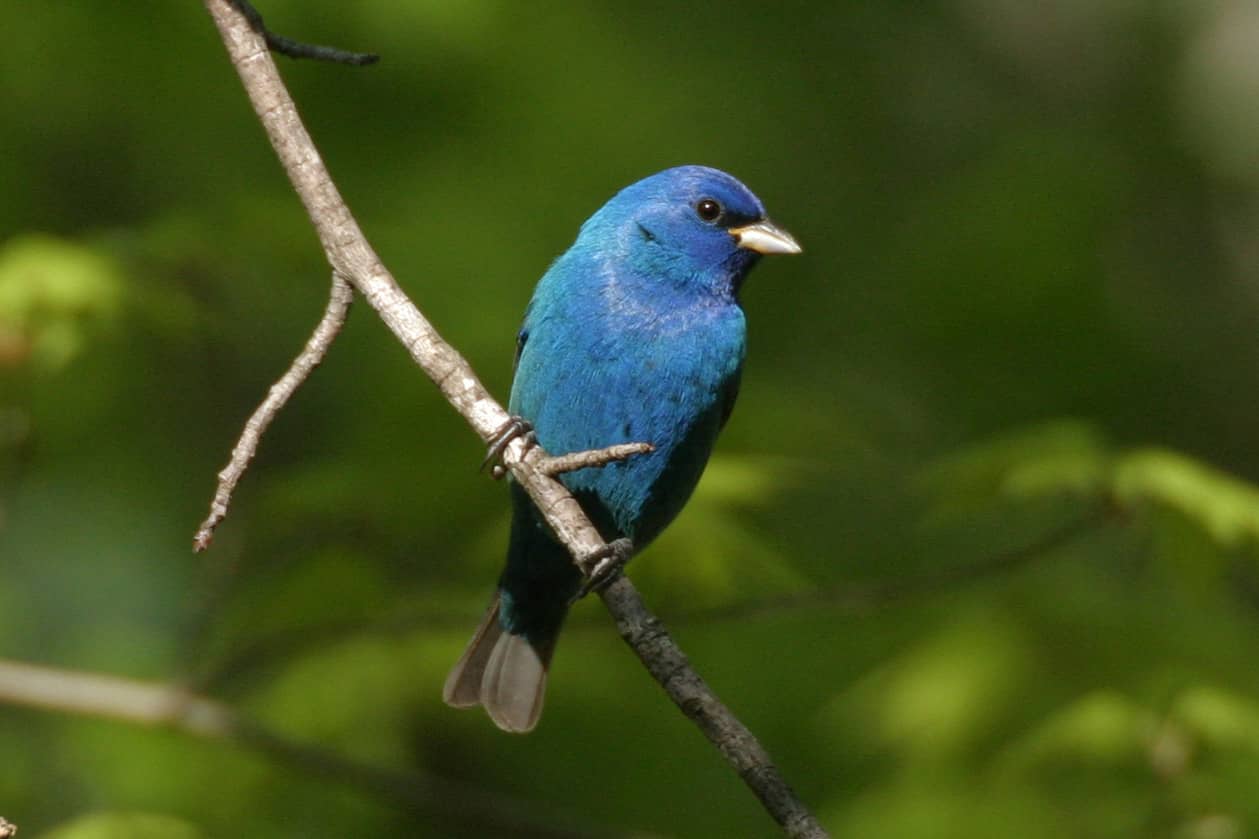Quail Management Beneficial for Other Declining Bird Species
OutdoorHub 04.26.12

While some landowners manage for bobwhite quail and work to boost wild bird populations across the state, they may not realize they are helping to benefit other bird species at the same time. Bobwhite quail have been experiencing drastic population declines across their range. Since the 1960s, quail populations have declined by an average of 5 percent annually. Similarly, grassland species such as dickcissels, as well as open pine species such as Bachman’s sparrow, have been showing drastic population declines. These declines are mainly due to habitat alteration through urbanization and changes in agricultural practices over the last 50 years. Many practices used to try and reverse bobwhite declines have similar benefits for other declining species.
One of the most commonly used tools for managing quail populations is prescribed fire. Prescribed fire in open pine stands will help to improve the habitat structure as well as boost habitat diversity of the understory, which is important for quail. Prescribed fire is also important for controlling hardwood species encroachment of the habitat. Quail prefer a mix of forbs and woody shrubs and some bare ground, which prescribed fire helps to maintain. If there is a lack of fire on the ground for more than 3 years, the vegetation quickly becomes too dense for quail to move around and forage.
Similarly, Bachman’s sparrows require frequent burning to maintain an open understory. They are found in association with quail in open pine stands that have been burned within 3 years. Growing-season burns, often used in quail management, promote an abundance of flowering forbs and grasses as well as an increased insect abundance, which is important for many species such as the Bachman’s sparrow when fledglings are present. Another declining species, loggerhead shrike, also benefits greatly from prescribed fire. Shrikes, a grassland species, are often found within open pine systems as well, but will only utilize those areas that are frequently burned. They require prescribed fire to keep the mid-story and understory open for foraging opportunities.
While prescribed fire is the most frequently used practice, other management techniques are also important for songbirds. The creation of habitat buffers or field borders around agricultural lands is often used for bobwhite quail management. Creating buffers of grasses and forbs around agriculture fields helps to create increased foraging opportunities for species such as quail, dickcissels, and indigo buntings, which often breed around field edges.
Restoration of longleaf pine systems, as well as native warm-season grasses, is beneficial for bobwhite quail. These game birds are abundant in open longleaf pine systems, which are maintained through frequent burning. Bachman’s sparrow, as well as brown-headed nuthatch, may benefit from increased longleaf pine habitat, which they readily use because of the open understory characteristic of this system. One species that has seen drastic population declines, the red-cockaded woodpecker, may eventually benefit from the increased longleaf pine stands across the Southeast. Some grassland birds, such as dickcissels and Eastern meadowlarks, may benefit from restoration efforts with native warm-season grass fields as well. These fields provide great foraging opportunities with increased insect abundance.
While these management practices are beneficial, many grassland species, as well as quail, require larger blocks of habitat to breed and maintain sustainable populations. Therefore, it is important to take a landscape approach to provide habitat for these declining species. One such effort is being made by the National Bobwhite Conservation Initiative (NBCI), formerly the Southeast Quail Study Group, which has developed a range-wide strategic plan in an effort to reverse the decline of quail while also benefiting other songbird species. The NBCI is a collaborative effort between state and federal agencies, including Alabama, and non-profit organizations such as Quail Forever with the common goal of reversing the decline of quail. They have recognized that these range-wide efforts could be beneficial for many other declining grassland and open pine bird species.
While there are efforts to manage for and stop the decline of these species, it will take time to see results. It is hoped that these increased efforts across the entire Southeast can reverse population trends of many of our songbird species while benefiting bobwhite quail.
The Alabama Department of Conservation and Natural Resources promotes wise stewardship, management and enjoyment of Alabama’s natural resources through five divisions: Marine Police, Marine Resources, State Lands, State Parks, and Wildlife and Freshwater Fisheries. To learn more about ADCNR visit www.outdooralabama.com.

